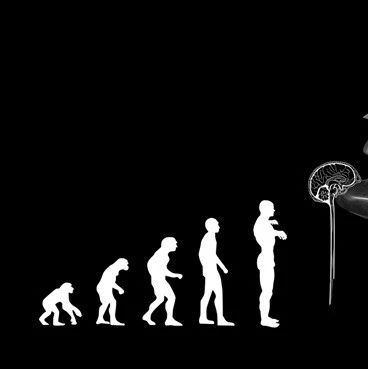导读:美国研究人员发现一种会造成男性秃发的基因。他们认为,这一发现有助早日研究出治疗秃发的药物。

美国宾夕法尼亚大学佩雷尔曼医学院皮肤病学教授乔治·科察雷利斯说:“我们去年研究过秃发者的头皮,发现上面仍有毛囊存在。因此我们推断,要么是毛囊中缺乏令头发生长的催化剂,要么是毛囊活性受到抑制。”
科察雷利斯和同事从受“雄激素性脱发”困扰的男性头皮上取样,其中既包括秃发部位,也包括有头发生长的部位,测量其中约2.5万种不同基因的水平。
研究人员发现,秃发部位的头皮中,一种名为PGD2的蛋白质水平是有头发生长头皮中的三倍。
研究人员随即用老鼠和在实验室中培育的毛囊进行验证。福克斯新闻社网站21日引述科察雷利斯的话报道:“它(PGD2蛋白质)的确会减少毛发生长。”
科察雷利斯说,这是一个全新发现,先前“没有人意识到PGD2与毛发生长有关”。
“大家知道,一些前列腺素能促使毛发生长,有的化妆品中添加前列腺素让睫毛变得浓密。这一发现纯属偶然,是因为青光眼患者使用含有前列腺素的眼药水后,发现睫毛变长。”
PGD2与前列腺素的作用相反,会让毛发越来越短。
科察雷利斯说,PGD2要抑制毛囊活动,必须先与受体GPR44结合,这种受体就是治疗秃发的关键所在。
“我们用老鼠做实验,采用基因技术让老鼠皮肤内缺乏GPR44受体,”他说,“在普通老鼠身上,PGD2的确可以抑制毛发生长,但在没有这种受体的老鼠身上,毛发正常生长。”
研究报告由《科学—转化医学》杂志发表。科察雷利斯说,这一新发现意味着在不久的将来,男性秃发问题可以得到根治。
“毫无疑问,我们通过研究秃发者找到问题根源,发现这种受体。我认为,这为尽早研究出治疗方法提供一个好机会。”
大多数男性中年开始秃发。他们的毛囊逐渐萎缩,长出来的头发不但不如先前浓密,而且很快脱落。秃顶是最常见的秃发形态,即随年龄增长头发不断变少。另一些人患斑秃,即骤然发生的局限性、斑片状的脱发性毛发病。
到70岁时,80%的男性会或多或少秃发。
心理学家说,秃发会影响人的自信心,对年轻人打击更大。

Prostaglandin D2 Inhibits Hair Growth and Is Elevated in Bald Scalp of Men with Androgenetic Alopecia
Garza, Luis A.; Liu, Yaping; Yang, Zaixin; Alagesan, Brinda; Lawson, John A.; Norberg, Scott M.; Loy, Dorothy E.; Zhao, Tailun; Blatt, Hanz B.; Stanton, David C.; Carrasco, Lee; Ahluwalia, Gurpreet; Fischer, Susan M.; FitzGerald, Garret A.; Cotsarelis, George
Testosterone is necessary for the development of male pattern baldness, known as androgenetic alopecia (AGA); yet, the mechanismsfor decreased hair growth in this disorder are unclear. We show that prostaglandin D2 synthase (PTGDS) is elevated at the mRNA and protein levels in bald scalp compared to haired scalp of men with AGA. The productof PTGDS enzyme activity, prostaglandin D2 (PGD2), is similarly elevated in bald scalp. During normal follicle cycling in mice, Ptgds and PGD2 levels increase immediately preceding the regression phase, suggesting an inhibitory effect on hair growth. We show thatPGD2 inhibits hair growth in explanted human hair follicles and when applied topically to mice. Hair growth inhibition requiresthe PGD2 receptor G protein (heterotrimeric guanine nucleotide)–coupled receptor 44 (GPR44), but not the PGD2 receptor 1 (PTGDR). Furthermore, we find that a transgenic mouse, K14-Ptgs2, which targets prostaglandin-endoperoxide synthase 2 expression to the skin, demonstrates elevated levels of PGD2 in the skin and develops alopecia, follicular miniaturization, and sebaceous gland hyperplasia, which are all hallmarks ofhuman AGA. These results define PGD2 as an inhibitor of hair growth in AGA and suggest the PGD2-GPR44 pathway as a potential target for treatment.
文献链接:https://stm.sciencemag.org/content/4/126/126ra34.abstract








